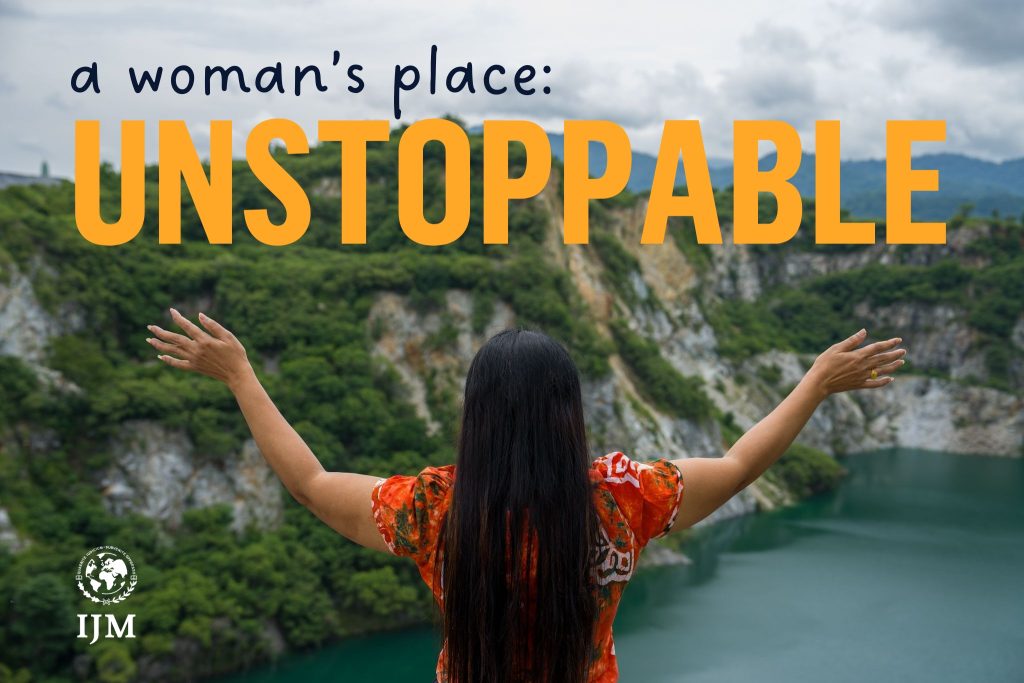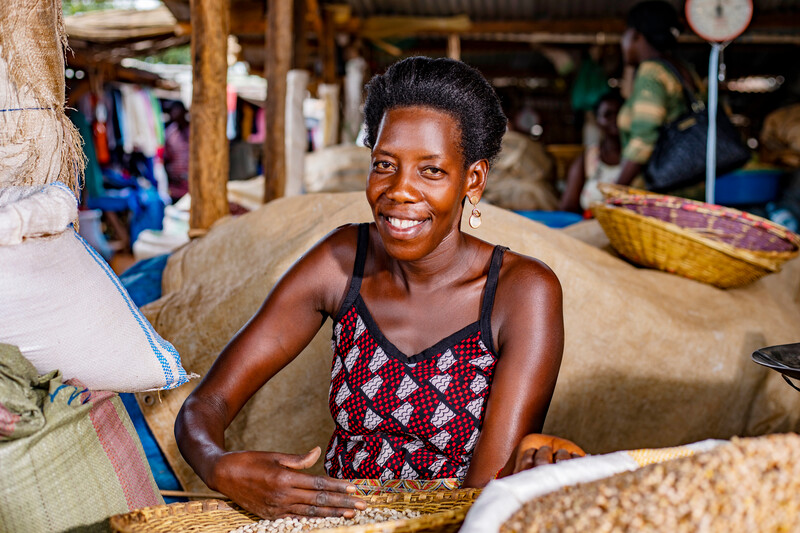
Shalini Newbigging is IJM’s specialist for rehabilitation and social services in South Asia.
Does IJM work with government shelter homes for aftercare?
In the Collaborative Casework phase of our programs, IJM Mumbai and Kolkata worked in close proximity with the government-run shelter homes in the state. This intervention was crucial because the shelter homes are the first point of intake for survivors of sex trafficking, and survivors can spend anywhere from 21 days to two years in the shelter home if they are adult women. In the case of minors, survivors can remain in the shelter home until they turn 18 years old, if their home is unsafe for them to return to.
Within Mumbai, there are two shelter homes where trafficking survivors are immediately referred post-rescue. If they are minors (under the age of 18), they are monitored by the Department of Women and Child Development (DWCD) and the Child Welfare Committee (CWC), a quasi-judicial body. If the survivors are majors (18 years of age and above), they are monitored by the DWCD and the Magistrates of the Special ITPA Courts.
How has IJM supported the government-run shelter homes?
IJM first supports survivors in the crisis-care period, with court and CWC remands, medical and age-verification exams, legal statements for the police and courts, and in crisis counselling through the placement of IJM-sponsored and trained counsellors. IJM then supports the government shelter homes for each client by providing minimum standards of care services to support rehabilitation and move the client toward sustained restoration.
IJM also assists in strengthening and modeling the documentation and reporting processes—needs assessments, treatment plans, home enquiries, etc.—which all inform the overall rehabilitation of the survivor. IJM implements and formalizes programs in the aftercare homes, such as education, livelihood projects (like tailoring), vocational trainings, trauma counselling, alternative therapy models, life skills classes, and more.
Lastly, IJM supports reintegration and repatriation plans for survivors in coordination with government agencies, involving travel to their home states and countries. This process can look different depending on where the survivors are returning to—but IJM ensures that we follow up and provide services so that the path towards restoration is easier and can be sustained better by our survivors.
IJM Mumbai has worked significantly to create networks of care with community and trusted NGO partners who oversee the need for social and emotional support, housing placements, job placements, and help our casework teams ensure the survivors make a strong transition into independent living.
How is IJM working with and reforming government shelter homes?
In the System Reform phase of our programs, IJM Mumbai and Kolkata moved into teaching and coaching the shelter homes to implement best practices the organization had strengthened though our casework phase. The teams also helped implement new programs that brought additional support to the infrastructure needs of the shelter homes.
IJM realized that timely and efficient service provision was available to a survivor only when a third party was present in their case. In order to prioritize client care within the government shelter homes, IJM decided to focus on the interventions described below:
- Implementing a Crisis Centre model at the Shelter Homes: This ensures shelter home staff are trained to prioritize the provision of minimum standards of care services in a timely and efficient manner. This included infrastructure and support systems within the administrative capacity of the shelter home office, crisis medical care infrastructure and services, and trauma counselling infrastructure and services. (Read more in this article about a new crisis center from July 2019)
- Implementing a Case Management/Convergence Model between shelter homes, courts, and police for better coordination of services for survivors. We worked to strengthen the system by collaborating with and facilitating meetings that helped encourage the system to prioritize the needs of survivors across the board.
- Implementing a Child-Friendly Child Welfare Committee, through provision of better infrastructure and appropriate trainings, which directly affected the well-being of survivors in shelter homes because of better case coordination and accountability mechanisms. This was an important space for IJM to step into because, for survivors under 18, the CWC makes all the final decisions regarding rehabilitation for the case. IJM wanted to ensure all processes at the CWC were streamlined and provided in a child friendly manner, including model order formats, safe counselling spaces, and a separate space for children to be engaged with books and toys so that they do not feel the added pressure of being at the CWC. (Read more about these CWCs in this SharePoint story.)
- Formalizing Training and Capacity Building: IJM helped institutionalizeTrauma-Informed Care (TIC) trainings for all shelter home staff, documentation and case management processes, trainings on home enquiry processes for the system at large, and other topics. We also helped create tools and resources to build capacity, like manuals on trauma-focused cognitive behavioral therapy (TF-CBT) and child-friendly protocols.
- Engaging External Partners to support casework and corporate partners to support infrastructure needs. For example, Deloitte has invested in a public-private partnership with the system and has since been heavily involved in upgrading the shelter home infrastructure, and ensuring child friendly environments are built across the various shelter homes.
How do we ensure safety and quality?
We work with the DWCD, Child Rights Commissions and Human Rights Commissions, for example, in various capacities to monitor the safety and quality of programs—those that have been initiated by IJM as well as for those that have not. IJM has been asked to conduct inspections on shelter homes within the childcare institutions, to reflect their quality of functioning and subsequently put forth recommendations for the system. IJM has also worked on research studies and submitted reports on the same to the Commissions. It is a space that IJM has been able to influence and cultivate because of the provision of consistent and quality casework over the years.
How do non-profit aftercare providers sustain their programs? How does IJM help build capacity?
IJM has worked collaboratively with new non-profit organizations and programs that expressed interest in starting what we now call Transition Homes. These programs provide rehabilitation and support to survivors exiting the government shelter homes at the age of 18. The needs and demands of those transition homes are different, but IJM was able to provide training expertise and connect partners who have since built out programs that are changing the lives of survivors in the city. There are now several transition homes in the city that provide safe, holistic and sustainable transition care programs for survivors.
IJM has engaged with shelter homes in various capacities that provide care and protection to children rescued from various backgrounds and case types (not only sex trafficking). While IJM may not have expertise in special needs clients or de-addiction centers, IJM works closely with the DWCD that oversees the well-being of all homes in the state. IJM has introduced like-minded partners and experts that have helped provide alternate forms of therapies like dance movement and art therapy, livelihood projects, etc.
IJM also leads the conversation on trainings with the DWCD and has provided trainings on best practices, case consultation, or more recently directly connected them to agencies like the Legal Aid Clinic (LAC) and District Legal Services Authority (DLSA), CWC, other expert NGOs for appropriate support. IJM has become a credible voice at the table—helping build capacity of the system by providing training opportunities. Most recently setting up mentorship programs for CWCs, holding consultations, and being an active participant in a multitude of other projects that have helped build the strength of the aftercare system in the state of Maharashtra.




